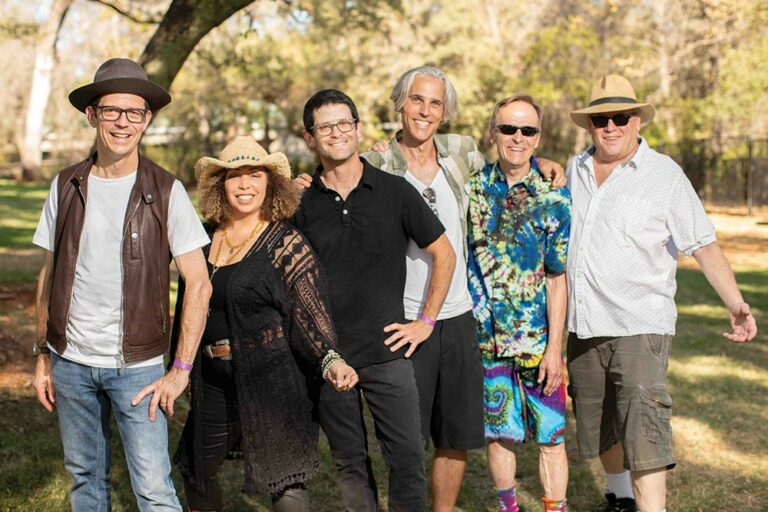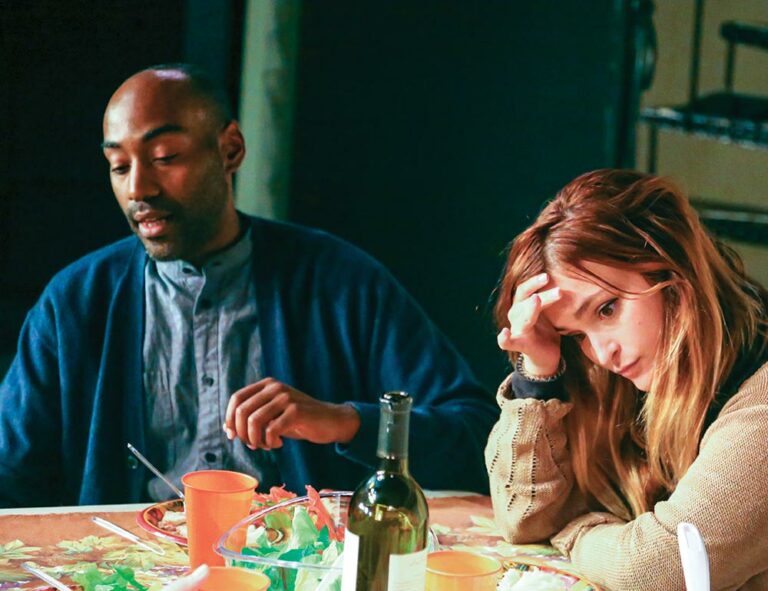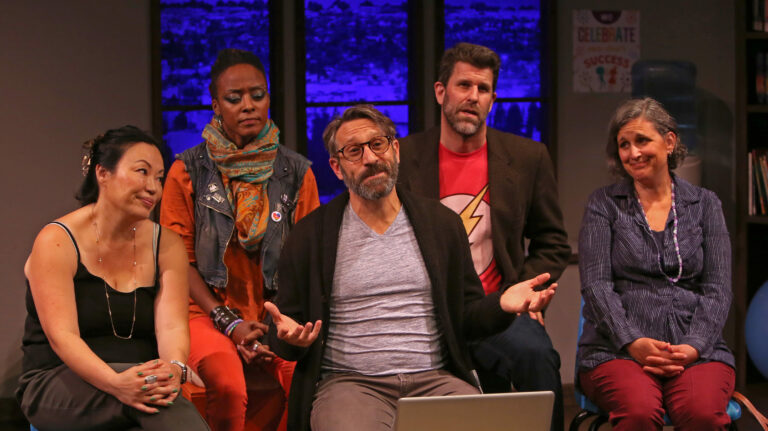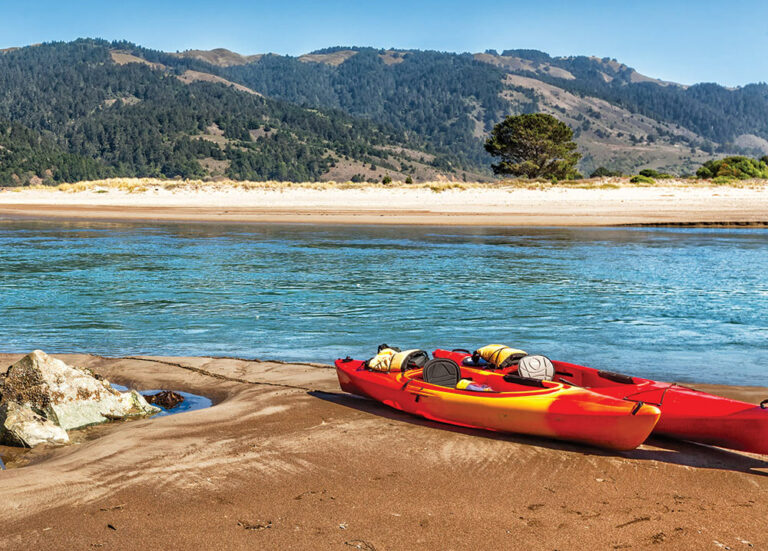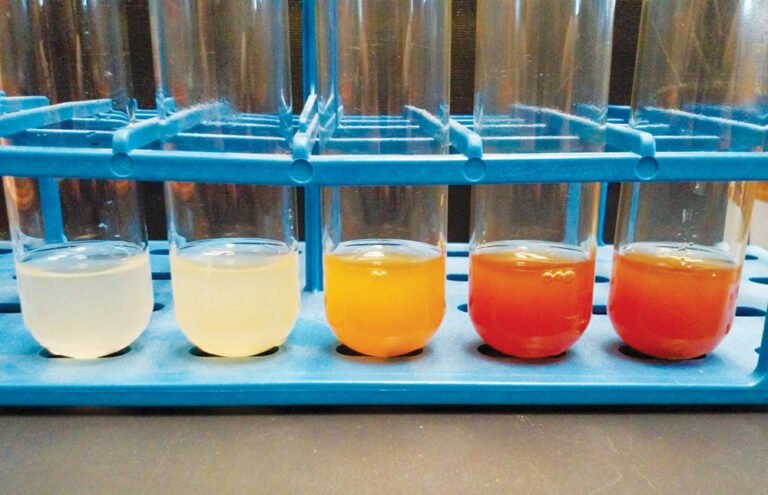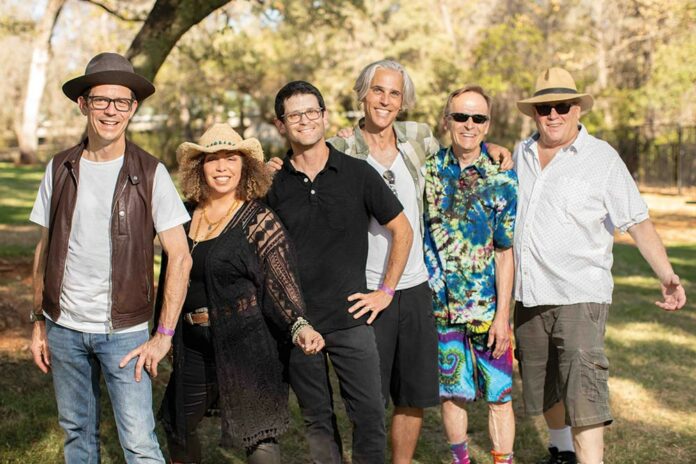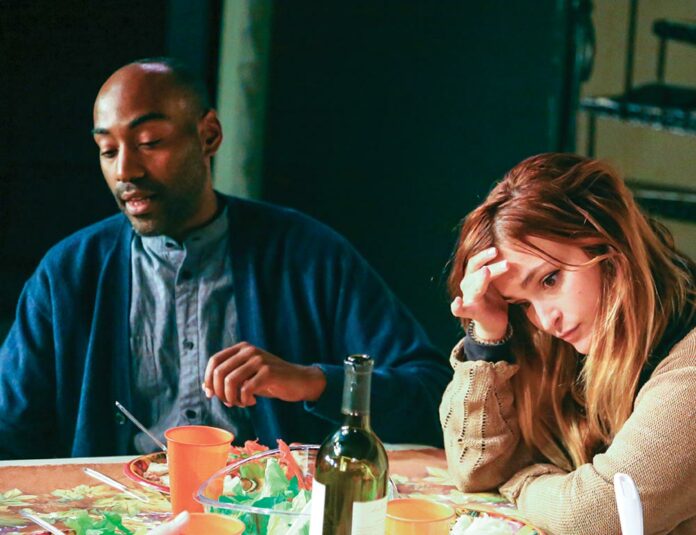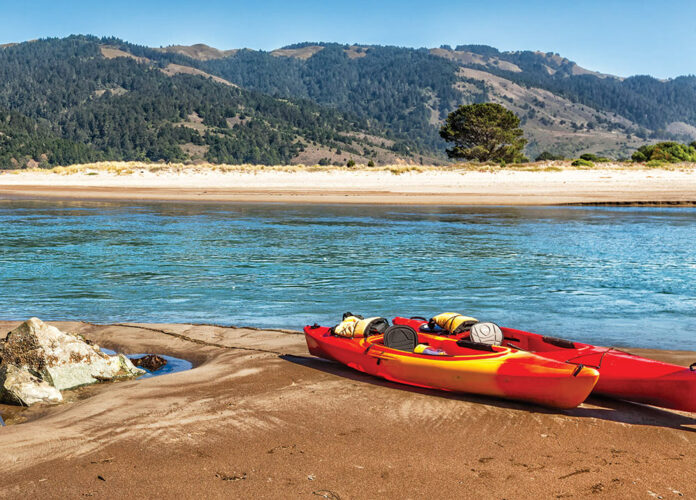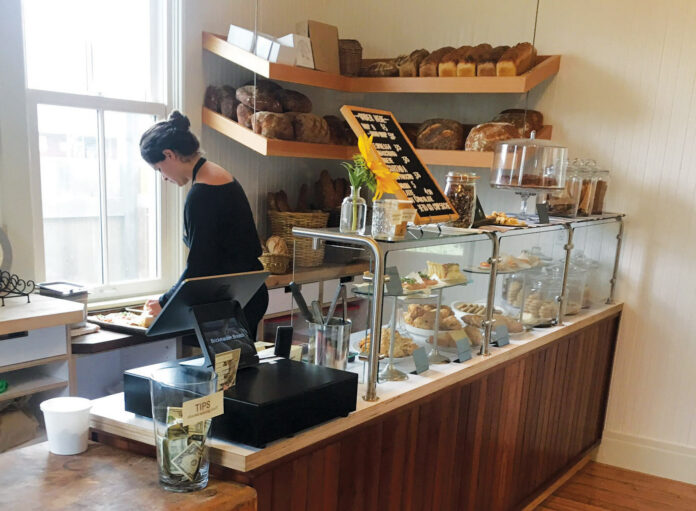The burning issue of the day is what is going on with those pelicans? We’re out on the Bolinas Lagoon in rental kayaks from Stinson Beach and the birds are going totally nuts. They’re all over the place, and they’re divvied up into squads of three birds—they keep hitting the water, diving for snacks, but it’s the furious flapping of the wings that has us scratching our heads. There’s three of us, too, and we’re getting hungry.
Donnie over at Stinson Beach Surf & Kayak met us earlier at the kayak put-in located across Highway 1 from the Stinson Beach elementary school. You can rent a single or tandem kayak from Donnie; our party of three each got our own kayak for a proper cruise of the federally-protected lagoon that spans from Bolinas to Stinson, for $50 a man.
Check the tides before you go. The lagoon is very shallow in parts and it’s pretty much a no-go if the tide is on the ebb. We had a couple hours of high tide but my colleagues still managed to get fetched up on a sand-bar at one hilarious point during our journey on the lagoon.
Donnie had counseled us to never get out of the kayak—lest one run the risk of stepping on one of the huge rays that populate the lagoon. And he also gave us the warning about leopard sharks. “Don’t get bit by one.” Okay. And, leave the darn seals alone. Will do. They’re everywhere in the lagoon and fun to watch as they pop up around the kayaks. But keep your distance, as contacts with humans can only end badly for the sea mammals.
Well, what about those pelicans? It’s starting to feel a little Hitchcock out here with all these swooping birds. My theory is that the massive birds use their flapping wings to stir up the mucky bottom, and release little worms and crustaceans into the current, that the birds then consume via that characteristic gullet of theirs. Sort of how certain fish do it—flap the muck, enjoy a sea urchin. Sounds like a plan, right? Well, Donnie says they may just be trying to rid themselves of sea lice, such a buzz-killer.
I’m out here in the lagoon with a very old and dear friend and his son, who’s about to head off to his first year of college after a late-August journey to the West Marin hinterlands with dad. When we ran aground on the sandbar, to much hilarity, I’m reminded of a story about Albert Einstein, who was a sailor on top of all that scientific mumbo-jumbo. Einstein, it was said, used to like to deliberately fetch himself up on a sandbar and didn’t mind waiting out the tide so he could be freed from it. He’d just sort of sit there marveling at astronomy, the tides. Unlike Einstein, we’re on a bit of a clock here, so the boys exit the kayaks in ankle-deep water and drag them into a deeper channel, and we continue apace. The pelicans are meanwhile blowing our collective minds with their airborne gymnastics and loud crashes into the water.
Our Stinson Beach activities were mostly sea-bound but there’s lots of ways to idle away an afternoon in the town-proper, which is known out here as a kind of pricey habitat for big old money.
There’s even some old-line Rothschild bucks out here, I’m told—but the town’s also famous for its Grateful Dead connections: The Stinson Beach post office was for decades the place Deadheads sent their mail-order money in for concert tickets. In case you missed it, the local Bolinas Hearsay News recently highlighted the high-low Dead connections to Stinson when it reprinted an Annie Liebowitz Rolling Stone photo of Jerry Garcia on the long and sandy beach that gives the town its name.
The main Stinson Beach drag comes and goes before you know it but it’s jam-packed with possibilities, and the perfect launch point for a day going up and down the Dipsea Trail or one of the other numerous trails that spin out from here and up into the Mt. Tamalpais watershed.
Stop in at the Stinson Beach Market before your hike to load up on deli sandwiches or to just grab a bottled water. The new-ish outdoor coffee kiosk next to the market is perfect for a hot cup of coffee on a cool and foggy morning when you’ve got the top of Tam on the brain.
For sit-down eateries of note, Stinson’s got a couple of standouts for piscatarians, view-hogs or folks out for a romantic turn at a sitdown place. The Siren Canteen serves multiple purposes—it’s at once a quick stop for a beachie lunch of burgers and fries, and it also boasts what’s perhaps the most peace-of-mind inspiring view out the window this side of Tony’s Seafood’s bay-side bounty in tiny Marshall up the coast.
Back at the Siren, the burgers are basic and kid-pleasing, but don’t pass up on the stellar rockfish tacos they pump out of the kitchen here—among other tacos on the menu that include pulled pork and carne asada. My experience is you’ll want to order three tacos, and eat them in rapid succession, without sharing. The fish version stands out among a Mexican-rich array of items: the pico is piquant, the crema is zesty and luscious—and oh, that view.
For a proper sit-down meal, the Parkside’s got a chair waiting for you right now and an expansive menu that features one of the great breakfast selections in all of Marin County. Yes, there’s avocado toast (live a little with a $4 prosciutto add-on) and $12 for a bowl of steel cut oatmeal may seem a bit on the twee side of the price point—but hey, it’s Stinson Beach. I’m partial to a coma-inducing platter of steak and eggs and the Parkside’s the place to go after you’ve gotten that big book deal and feel the need to celebrate over a $28 dollar breakfast of petite fillet, grilled asparagus, etc. etc. etc. and truffle oil too. Wait, what book deal?
With a bellyful of morning beef as your guide, now it’s time for a stroll down the main drag, where there’s a little bit of everything: Stinson Beach Books is a surprisingly capacious shop that not only carries the must-read New York Times beach book of the summer, but covers the tourist base with lots of postcards—along with a big selection of kitchen and table linens. (On that note, the inviting Stinson Beach public library, part of the Marin library system, is a friendly local bookend to the town’s reading-materials retailer).
On the visual arts front, be sure to keep an eye peeled for the ever-expanding and popular Stinson Beach Documentary Film Festival that’s been lighting up the town the past several Novembers and is poised to do so again this year. Until then, Claudia Chapline Gallery & Sculpture Garden offers limited weekend hours (Sat-Sun Noon-5pm) and tours by appointment. This month the gallery features “poet painters” John Brandi and Geri Digiorno, whose collages are up through Sept. 28.
Not to get all corny about it, but there’s an argument to be made that Stinson Beach is itself a poem painted on a dream. That’s heavy thinking man, which is only possible after consuming a breakfast steak and spending the morning at Red Rocks Beach, in the nude. You could say the same about much of West Marin, whether nude or not, and I just spent the past week saying as much to my West Marin visitors.
Back on the lagoon, it’s time to head back to shore to meet up with Donnie. From there, we’d be off to Tony’s Seafood for another godhead meal.
In the end, we decided that our vacation through-line could not, and would not, accept that those wild and massive pelicans were simply shedding sea lice from their feathers.
No, they were doing something much more exotic, free-wheeling, and appropriate for a West Marin that’s brimming with fresh eats: They were hunting for tasty morsels! Hey, pelican, here’s some advice: Try the Sweetwater oysters at Tony’s Seafood in Marshall, or a couple dozen of them. It’s a lot less work than all that flapping.
More Kayak, Please
Slipping the kayak into the silken water of Tomales Bay feels like sliding into the skin of another animal—a seal or a pelican. The gray cloud cover contrasts with the seawater, eerily warm and blue, almost tropical. Conditions are perfect for experiencing bioluminescence and exploring the natural history of the bay.
On dark nights from summer into fall, bluish-white flashes of light are emitted in disturbed water by bioluminescent plankton. They’re found mainly in saltwater near freshwater outflow. The luciferase enzyme—derived from the Latin lucifer, “lightbringer”—produces bioluminescence.
This evening holds extra magic for a group of kayakers about to put in on the edge of the tectonic boundary of the San Andreas fault.
Our Blue Waters Kayaking group leaves the North American Plate’s serpentine hills on the bay’s east side by Marshall, and heads westward toward the granitic landmass of Point Reyes and the Pacific Plate—itself moving northwest by inches every year.
Geologic activity, constant for millennia, dramatically manifested when the 1906 earthquake ruptured the fault nearby.
Geology influences plant life, by creating soil. Serpentine soil is rich in iron, but poor in nutrients like nitrogen. It stunts growth, fostering more grassland, as evidenced on the east side; adapted natives include leather oak, manzanita and the rare Sargent cypress. Granitic soil is quartz-rich, acidic and nutrient-poor; typical plants include Douglas fir and Bishop pine, seen on the west side.
Coastal Miwok lived here for thousands of years—hunting, fishing and gathering oak acorns, buckeye and bay. The Miwok were brutally disrupted during the 16th to 19th centuries, when English, Spanish and Russian explorers colonized the region. After the 1849 Gold Rush, Ranchers were also drawn to the inviting coastal prairie, nurtured as it was by sustainable Miwok land-management practices of burning, weeding, pruning and harvesting.
As we paddle across Tomales Bay, Drew the Guide gives us the history of Hog Island. It’s named for the cormorants that amass in its scant trees. The air is filled with their hog-like grunts as they join in a feeding frenzy with a squadron of brown pelicans.
“Those birds dive-bomb the water,” he explains, “turning their heads just before hitting it.” This ensures they see their fish prey—but the water’s harsh impact often results in them developing cataracts in their one favored eye.
Harbor seals bask on the beach, tails in the air. They slide silently into the bay, and along with Steller’s sea lions, pop their heads through the water to watch us. We give them a wide berth and head for a cove on the western side.
Tomales Bay comprises 2,000 acres within the Point Reyes National Seashore. One of the most biodiverse and ecologically important areas of the California coast, the bay hosts more than 900 plants and animals—many threatened or endangered. These include three salmonids—coho, chinook and steelhead—and birds galore: egrets, great blue heron and black rail. Even whales enter the bay on occasion. Tomales Bay State Park was formed to preserve its fresh- and saltwater marshes; several hundred acres that were drained for grazing during the 1940s were restored in 2008.
Dairy and cattle ranches were grandfathered in when Point Reyes became a park. Now, ranchers have a controversy to deal with, involving plans to cull limited numbers of elk from the Drakes Beach herd. The elk are reportedly migrating into cow-grazing territory.
Approaching a cove in the kayak, I hear an eerie shriek and turn to see a blond-backed herd of two dozen Tule elk near shore. The high-pitched screech was the males bugling. It’s the height of rutting season.
The bulls charge each other, antler racks lowered, in a thrilling spectacle. Bulls of this subspecies of North American elk weigh around 500 pounds, their antlers up to five feet wide. We’ll leave the simmering controversy over their fate for another day.
Closer to the water, a large bird—a great horned owl?—flies low over the bushes, hunting as the sun sinks and the sky turns to night. Someone cries, “It’s starting!”
The show begins.
At first it’s faint, small sparkles.
Dipping hands and oars, we cruise along, and the water droplets light up as if the waves are filled with stars. Even the fish become photons of light, shooting through the water like showers of diamonds.
We stay in that cove, mesmerized like spellbound children. Maybe if we remain open to such wonders, connecting to and protecting them will bring us closer to the natural world we’re a part of. Now the bioluminescence slowly begins to lose its luster, and it’s time to paddle back. We head toward the dock after an unforgettable experience. —Irene Barnard




